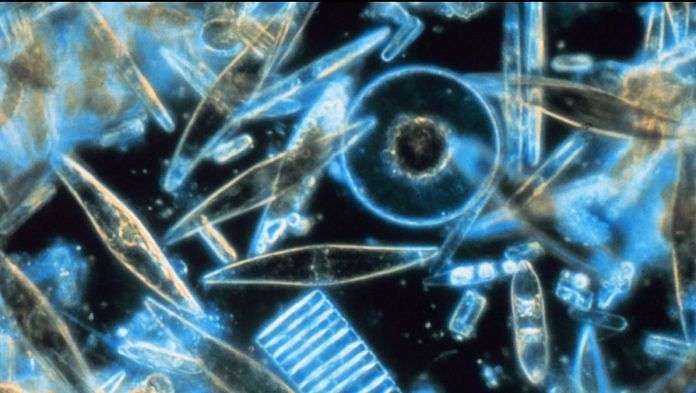Some of the tiniest life forms in the sea are playing a mighty role in protecting life on Earth. Scientists have discovered that microscopic plants called diatoms absorb 10-20 billion tonnes of carbon dioxide (CO2) every year as they float on the surface of the ocean. That’s equal to the amount of carbon captured annually by all of the world’s rainforests.
A study published in the journal Frontiers in Plant Science documents the findings from data gathered on expeditions undertaken by the Tara Oceans Foundation, which uses a ship to circumnavigate the globe conducting ocean-related climate research.
Marine plankton samples from around the world were used to create a data set. Researchers looked at the genes of five key carbon-fixing enzymes in the diatoms and found that diatoms mainly use one pathway to concentrate CO2 near a carbon-fixing enzyme – even when there are higher levels of CO2.
Understanding the way that diatoms react to the environmental variability of CO2 has helped to shed light on how they are able to absorb so much of it – giving scientists important information to model the way that these microorganisms could respond to future CO2 levels.
”So far, our study indicates that despite variability in CO2 levels, these tiny autotrophs are highly efficient in concentrating CO2 inside the cell,” Haimanti Biswas of the National Institute of Oceanography-CSIR (Council of Scientific Research), India, said in a news release. “That’s the probable reason for their ability to fix nearly one-fifth of the global carbon fixation on earth.”
Restoring sea meadows to capture carbon
Diatoms are not the only marine plant life capable of absorbing carbon. Seagrass – which covers just 0.2% of the seabed, but accounts for 10% of the ocean’s capacity to store carbon – could play a key role in slowing climate change.
It also sustains biodiversity by providing a habitat for thousands of species, like shellfish, seahorses, and turtles.
However, seagrass is under threat. According to the United Nations Environment Program, almost 30% of seagrass around the world has been lost, due to human activity such as dredging, industrial run-off, and unregulated fishing.
Scientists say its decline may be contributing to a growth in emissions of up to 299 teragrams a year (299 billion tonnes). It’s why the United Nations has declared plans for the protection of seagrass can be included in national climate change contributions as part of the Paris Agreement.
Seagrass restoration to combat this loss is happening at sites around the world. In 2020 in the UK, environmentalists planted hundreds of thousands of seagrass seeds off the coast of Wales. The seeds are sown in hessian bags that will allow them to sprout and create new seagrass meadows.
Save the whale to save the planet
At the other end of the spectrum, the world’s largest creatures are also playing a vital part in reducing carbon emissions. Whales store huge amounts of CO2 – accumulating an average of 33 tonnes over a 60-year lifespan. Once they die, they sink to the bottom of the ocean, trapping the carbon for hundreds of years.
The iron and nitrogen in the waste that whales produce attracts microscopic plankton, which is in itself capable of consuming around 37 billion metric tons of CO2 – equivalent to the amount captured by 1.70 trillion trees.
Ocean-based climate solutions will be on the agenda of the World Economic Forum’s Virtual Ocean Dialogues, an online event bringing communities together to find answers to the challenges facing our marine habitats.
Katharine Rooney , Senior Writer , Formative Content
This article was previously published in the World Economic Forum.
Also read: By the end of the century, our blue oceans will turn green



